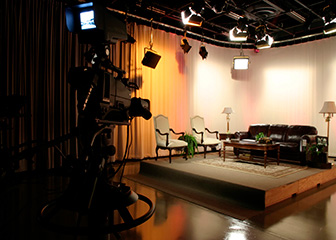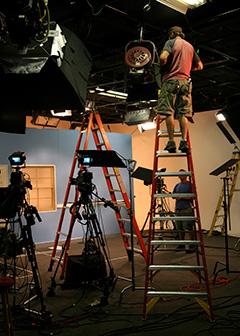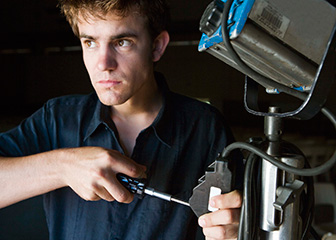
Set and exhibit designers take into account such things as the size of the space, lighting, and the intended audience.
Set designers create sets for movie, television, theater, and other productions. They analyze scripts or other research documents to determine how many sets will be needed and how each set can best support the story.
Exhibit designers create spaces to display products, art, or artifacts.
Duties
Set and exhibit designers typically do the following:
- Develop set or exhibit designs based on their evaluation of scripts or of artifacts to be exhibited, budgets, and location
- Collaborate with directors, curators, clients, other designers, and production staff on specific design features
- Consult with producers, curators, and clients to identify the intended audience and determine what set or exhibit characteristics may appeal to them
- Prepare hand-drawn sketches or use Computer Aided Design (CAD) programs to create electronic drawings and diagrams to show what the finished sets or exhibits will look like
- Prepare budgets for all necessary sets or exhibits
- Create sets and exhibit spaces that help to tell a story
Set and exhibit designers create a space to communicate a particular message to an audience. In film, theater, or television, set or scenic designers communicate the author’s or director’s ideas to the audience through the look and feel of scenery, furniture, and props.
They must take into account the scene’s historical period, time of day, location, season, and other aspects of the story. In addition, set designers help the audience gain a better sense of the physical space in which the action takes place.
Exhibit designers must take into account the lighting, size of the space, message, and intended audience when they design exhibits. Lighting is essential because it can make a space more appealing or draw visitors’ attention to something specific.
Increasingly, museum and trade show exhibits are becoming interactive and integrate multimedia effects, such as video and sound, into the experience. Exhibits are no longer just a few posters or paintings on the wall; they have become three-dimensional experiences.
Exhibit designers are responsible for developing a concept and then seeing the design project through to the opening of the exhibit.
Set and exhibit designers may work on traveling shows and exhibits, such as concert tours, theatrical road shows, and traveling museum exhibits. Often, these sets must be easily erected and dismantled for transport to new venues and must be flexible to accommodate performing or exhibit spaces of different sizes.
Many set and exhibit designers eventually specialize in designing sets for a particular purpose. Most, however, start out learning a common set of skills and taking a variety of set and exhibit design jobs while building their credentials, expertise, and personal style.
The following are examples of types of set and exhibit designers:
Live theatrical performance set designers work on stage sets for theater, ballet, opera, or other live performances. They collaborate with directors to ensure that the set enhances the story and is appropriate for the space and size of the production.
Television or movie set designers design sets for television programs or motion pictures. Filming may take place either on location or on a production set, and set designers are responsible for any background that appears on camera.
Television studio set designers create set designs for in-studio programs, such as news and sports broadcasts, talk shows, and interviews. Their designs take into account the desired brightness of studio lights, any permanent background images, and the ability to display other visual images, such as images shown through television monitors or screen projections.
Trade show or convention exhibit designers work on designs for exhibiting or demonstrating products at trade shows and conventions. They are responsible for making maximum use of the available space and attracting visitors with a visually pleasing display.
Exhibit designers work with curators, artists, and museum directors to design sets that display art or artifacts for museum exhibits. Exhibit designers must be able to tell a story through exhibit pieces while allowing visitors to walk through the exhibit area easily.













